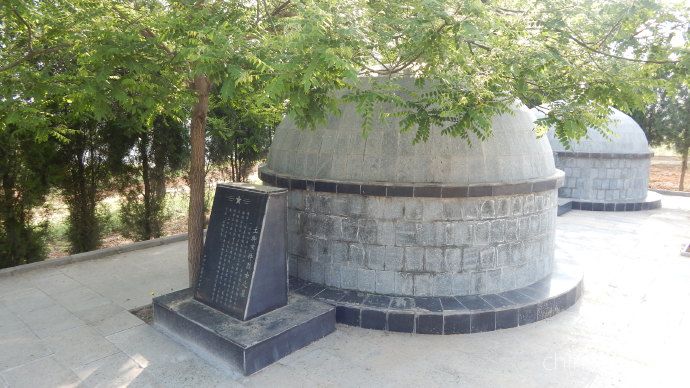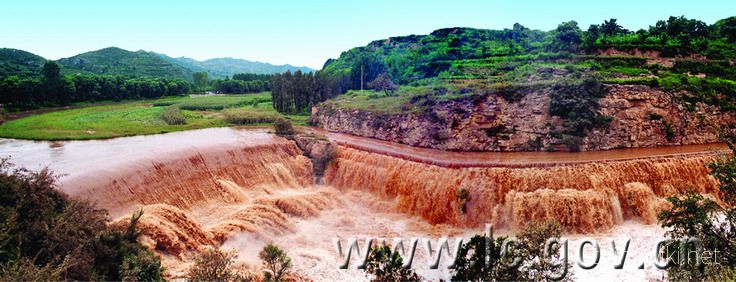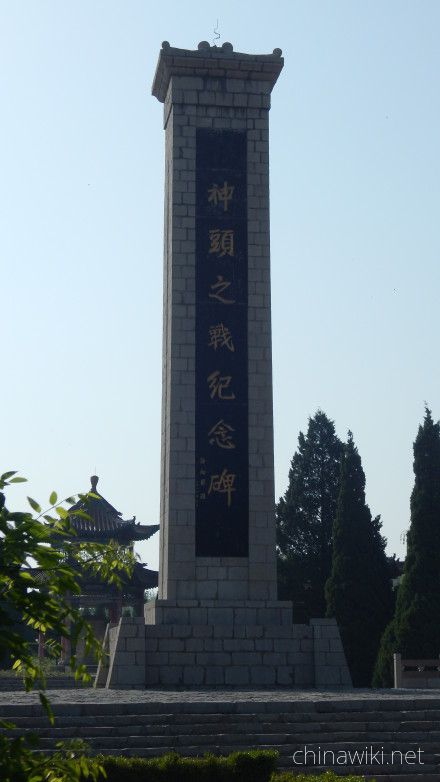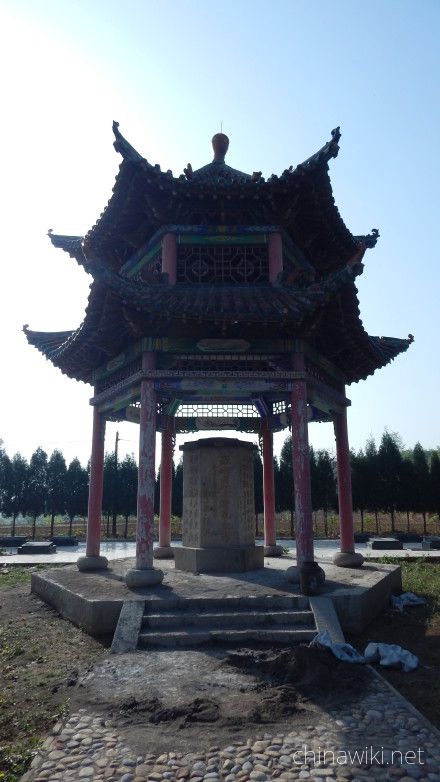Lucheng District, Changzhi City, Shanxi Province
Lucheng District belongs to Changzhi City, Shanxi Province. It is located in the southeast of Shanxi Province, the West foot of Taihang, and the northeast edge of Shangdang basin. It is located between 112 ° 59 ′ 36 ″ - 113 ° 25 ′ 40 ″ E and 36 ° 14 ′ 00 ″ - 36 ° 29 ′ 30 ″ n, with an altitude of 616-1316m. Xiangyuan county is bounded by mountains in the northwest, Licheng County across the river in the northeast, Pingshun County in the southeast and Yuanchuan in Luzhou District in the southwest. It is 20 kilometers away from the center of Changzhi City.
In 2019, Lucheng District's GDP will reach 12.54 billion yuan, a year-on-year increase of 7.7%.
In March 2019, it will be listed in the first batch of counties for the protection and utilization of revolutionary cultural relics.
| Chinese name | Lucheng Qu |
| Foreign name | LuchengDistrict |
| alias | patrol round a city in defense |
| area number | 140406 |
| Category of Administrative Region | Municipal District |
| Region | Changzhi City, Shanxi Province, China |
| geographical position | Northeast margin of Shangdang Basin |
| the measure of area | 615km ² |
| Jurisdiction area | 3 streets, 4 towns and 1 Township |
| Government residence | No.16, chengneizheng street, Luhua Street |
| Area Code | 0355 |
| zip code | 047500 |
| climatic conditions | Warm temperate semi humid continental monsoon climate |
| population size | 235800 (2017) |
| Famous scenic spot | High mountain and flowing water scenic spots, green field drifting scenic spots, etc |
| train station | Lucheng railway station |
| License plate code | Jin D |
| Gross Regional Product | 12.54 billion yuan (in 2019) |
| Secretary of the district Party committee | Qin Suliang |
| District head | Guo Qiang |
Chinese PinYin : Shan Xi Sheng Zhang Zhi Shi Lu Cheng Qu
The origin of the name
According to shuijingzhu: "Lu County, so Chizhai Luzi state."
History of construction
As early as the Paleolithic age, there were ancestors living in Lucheng District. According to ancient history, as early as in the period of Yellow Emperor, shenlu, a descendant of Yan Emperor, was granted the title of Lu city and established Lu state. His descendants took "Lu" as their surname.
The Shang Dynasty belongs to the Weizi fiefdom, which is called the Weizi kingdom.
In the spring and Autumn period, it was the state of Luzi. In the Warring States period, the hometown of Luzi was called "Lu" or "Lu", which was one of the seventeen cities of Shangdang in South Korea. At that time, Lu and Lu were interchangeable, and there is still a living Korean fangzulubu, whose location is now Lucheng District.
Lucheng County in Qin Dynasty belongs to Shangdang county.
In the Western Jin Dynasty, Lu county was once the seat of Shangdang county.
In the 11th year (450) of Taiping Zhenjun in the Northern Wei Dynasty, Lu county was changed into Kaling county. The county was located in Gucheng village, 25 kilometers northeast of the present urban area, and later moved to Gucheng town of Licheng county.
In the 16th year of kaihuang (596) of Sui Dynasty, Li and Lu were set up separately. The southern part of Jialing county was divided into Lucheng County, and the county government was set up in the present Lucheng District.
In 905 of the second year of emperor Tianyou of Tang Dynasty, Zhu Wen changed Lucheng County into Luzi county to avoid his father Zhu Cheng's name. The name of Lucheng county was restored in Tang Dynasty. It was used in song, yuan, Ming and Qing Dynasties.
In May 1940, in order to meet the needs of the Anti Japanese war situation, Ludong county and Luxi County were set up by taking Handan Changzhi highway as the boundary.
In May 1941, it was merged into Lucheng county.
In July 1954, it merged with Changzhi county and was called Lu'an county.
In 1958, it was included in Changzhi City.
In 1961, the city and county were set up separately, and Lucheng county was restored, which was under the jurisdiction of Southeast Shanxi.
In October 1983, it was transferred to Changzhi City.
On April 26, 1994, with the approval of the State Council, Lucheng county was abolished and Lucheng city at the county level was established.
On June 19, 2018, the State Council approved the revocation of Lucheng city and the establishment of Lucheng District of Changzhi City. On November 23 of the same year, Lucheng District of Changzhi City was officially established.
Division evolution
In March 2020, Shihui township will be set up.
In March 2021, Heshi township was merged into Luhua street, and Zhaidian town was changed from town to street.
Zoning details
As of March 2021, Lucheng District has jurisdiction over 3 streets, 4 towns and 1 Township, with a total of 17 communities and 134 administrative villages. The district government is located in Luhua street.
Location context
Lucheng District of Changzhi City is located in the southeast of Shanxi Province, the West foot of Taihang and the northeast edge of Shangdang basin. It spans 112 ° 59 ′ 36 ″ - 113 ° 25 ′ 40 ″ E and 36 ° 14 ′ 00 ″ - 36 ° 29 ′ 30 ″ n. It is connected with Pingshun County in the southeast, Luzhou District of Changzhi City in the southwest, Xiangyuan County in the northwest, Zhuozhang River in the northeast and Licheng County across the river. It is 22km to Pingshun County in the southeast, 34km to Xiangyuan County in the northwest, 36km to Licheng County in the northeast and 20km to Changzhi City Center in the southwest. The northwest is 240 kilometers away from Taiyuan, the capital of Shanxi Province, and the northeast is 623 kilometers away from Beijing, the capital of Shanxi Province. The outline of Lucheng District is irregular, with a length of 31.5 km from east to west and a width of 19.5 km from north to south. The total administrative area is 615 square kilometers.
topographic features
The plain, hilly and mountainous areas in Lucheng District accounted for 15.6%, 62.8% and 21.6% of the total area respectively. The eastern part is mostly mountainous, the central part is mostly Pingchuan, and the western part is mostly hilly. The altitude is 616-1316 meters, the highest point dayuno is 1316.1 meters, and the lowest point Xin'an Valley is 616 meters.
Hydrology
All rivers in Lucheng District belong to Haihe River Basin. It can be divided into two types: regular River and seasonal river; The south source of Zhuozhang River and Zhuozhang River are constant flow river, the others are seasonal river. Zhuozhang River originates from fajiushan (lugushan) in Changzi county. From south to north, it flows through Anju village in Changzi County, Shangdang district and Luzhou district. It enters from Quli village, Shihui Township in Lucheng District, and leaves from Caojiagou village through Song Village, dongbaitu village, Hancun village, Hongling village, Dianshang Village and HEPAI village. It enters Xiangyuan county to Ganlin village and joins Zhuozhang River West source. It is 17.5 km long and has a drainage area of 262.7 square kilometers. Zhuozhang River was called Lushui and Luchuan in ancient times. It is named because of its rapidity and loess sediment. Zhuozhang River has three sources: South, West and North. Nanyuan, 133.5 km long, originated from fajiushan, Changzi county; Xiyuan originates from Huashan Mountain and Funiu Mountain in the northwest of Zhangyuan village, Qinxian County, with a length of 81.4 km; Beiyuan originates from Liushugou, Yushe County, 129.8 km long. The south source and the West source converge at Ganlin village, Xiangyuan County, and flow eastward to hehekou village. When they converge with the North source, they are called Zhuozhang River, which is the natural boundary of Lucheng District, Licheng county and Pingshun county. It enters from Nanma village in Lucheng District, flows through Shiliang, Shangcun, Changcun, Xucun, Luhe, Gucheng, Xiliu and Nanliu in Xiliu Township, and exits from Xin'an village. The territory is 20 kilometers long, with a drainage area of 352.24 square kilometers. There are also more than ten main tributaries in the territory, such as Danan River, bailitan River and manliu river.
climate
Lucheng District is a warm temperate semi humid continental monsoon climate zone with four distinct seasons and pleasant climate. The average annual temperature is 9.5 ℃, the average annual precipitation is 503.7mm, the average annual sunshine hours is 2434.9h, and the annual frost free period is 176 days.
land resource
Lucheng District covers an area of 615 square kilometers, about 922000 mu, including 521000 mu of cultivated land, 11000 mu of garden land and 55000 mu of forest land.
water resource
The total amount of water resources in Lucheng District is 678 million cubic meters, of which the runoff of transit rivers is 584 million cubic meters, and the total amount of domestic water resources is 94 million cubic meters. Among the water resources in the territory, the runoff of rivers is 77 million cubic meters, the groundwater resources is 71.1 million cubic meters, and the repeated water volume is 54.1 million cubic meters, which is a rare water rich area in northern China. The per capita share of water resources is about 3652 cubic meters, which is 1.4 times and 6 times of that of the whole country and the whole province respectively. Xinan spring is the second largest spring in North China. The elevation of the spring mouth is 600-640 meters above sea level. The average annual flow of the spring group is 11.9 cubic meters per second. The water quality is excellent. It is pure natural mineral water with high strontium and low sodium and no carbon dioxide.
Biological resources
Lucheng District is rich in plant resources, a total of 56 families, 25 genera and 212 species. Among them, 48 species belong to 25 genera and 26 families of natural woody plants, more than 150 species belong to 30 families of herbs, and 14 species are bryophytes and fungi. The main tree species are Pinus tabulaeformis, Pinus bungeana, Platycladus orientalis, Populus davidiana, Populus simonii, Salix matsudana, Tilia amurensis, birch, Prunus armeniaca, Prunus davidiana, Duli, Chimonanthus praecox, etc. There are about 30 shrub species. Herbaceous plants mainly include more than 30 species of Gramineae, 15 species of Leguminosae, 12 species of Compositae, 7 species of Liliaceae, 5 species of Labiatae and 20 species of other families. Mosses and fungi mainly include mosses, pine mushrooms, Auricularia auricula, horse skin bubbles, lichens and so on. There are also abundant medicinal plants.
There are 83 kinds of wild animals in Lucheng District, including 15 kinds of mammals (precious animals, fur animals, beneficial animals, rodent animals), 23 kinds of birds (meat birds, common birds, beneficial birds), 2 kinds of reptiles (snakes, geckos), 4 kinds of amphibians (black frogs, forest frogs, green frogs, toads), and 4 kinds of aquatic animals (Trionyx sinensis, Monopterus albus, small fish, loach, shrimps, shells There were 7 species of snails, 32 species of insects (medicinal insects, beneficial insects and pests).
mineral resources
Lucheng District is rich in mineral resources, the main non-metallic minerals are coal, limestone, flux dolomite, gypsum, refractory clay, cement clay, brick clay, ceramic clay, sulfur ore, Bingzhou stone. Metal ores include iron ore, copper ore, etc. Among them, the coal distribution area is 22.2 square kilometers, and the raw coal reserves are about 240 million tons; Dolomite deposit covers an area of about 20 square kilometers, with reserves of about 220 million tons, accounting for 90% of the proven reserves in Shanxi Province; The gypsum deposit covers an area of about 10 square kilometers with a reserve of 23.275 million tons; The deposit is concentrated, high grade, shallow buried and easy to exploit; Limestone distribution area of about 310 square kilometers, reserves of about 500 million tons, of which. The reserves of cement limestone, solvent limestone and calcium carbide limestone are 170 million tons, 70 million tons and 150 million tons respectively.
According to the population sampling survey in 2017, the total population of the region at the end of the year was 235789, an increase of 1235 over the end of 2016. In the whole year, 2914 people were born, and the birth rate was 12.39 ‰; 1679 people died, with a mortality rate of 7.14 ‰; The natural growth rate is 5.25 ‰. The sex ratio (female = 100) was 105.73.
overview
In 2017, Lucheng District achieved a GDP of 10.58 billion yuan, an increase of 10% over 2016 at comparable prices. 3:63.8:31.9. The per capita GDP is 44981 yuan. The total revenue was 1324.09 million yuan, up 18.6% year on year; Local fiscal revenue was 707.62 million yuan, up 14.1% year on year; The general public budget expenditure was 1224.58 million yuan, a year-on-year increase of 7.8%. The per capita disposable income of urban residents was 27693 yuan, an increase of 7.4% over the previous year; The per capita disposable income of rural residents was 13089 yuan, an increase of 7.3% over the previous year.
In 2019, Lucheng District will achieve a GDP of 12.54 billion yuan, a year-on-year increase of 7.7%; The added value of industries above designated size increased by 6.1% year on year; The investment in fixed assets was 7.68 billion yuan, up 9.3% year on year; The total retail sales of social consumer goods reached 1.96 billion yuan, up 6.9% year on year; The general public budget revenue was 792 million yuan, a year-on-year increase of 16.53%; The per capita disposable income of urban permanent residents was 31617 yuan, a year-on-year increase of 7.1%; The per capita disposable income of rural permanent residents was 15623 yuan, a year-on-year increase of 9.4%.
primary industry
In 2017, the planting area of crops in Lucheng District was 17775 hectares, a year-on-year decrease of 0.8%; Among them, the grain planting area is 16303 hectares. In the grain planting area, the corn planting area is 13979 hectares, and the wheat planting area is 786 hectares.
In 2017, the grain output of Lucheng District was 124644 tons, an increase of 3.3% over the previous year. Among them, 2921 tons of summer grain, an increase of 22.6%; Autumn grain was 121723 tons, increasing by 2.9%.
In 2017, the total output of pork, beef and mutton in Lucheng District was 8409.6 tons, an increase of 4.0% over the previous year. Among them, the output of pork was 7768.7 tons, an increase of 4.0%; The beef output was 98.8 tons, an increase of 6.1%; The output of mutton was 542.1 tons, an increase of 3.4%. At the end of the year, there were 55601 live pigs, an increase of 1.7%; The number of live pigs sold was 103582, an increase of 4.0%; The output of milk was 2493 tons, an increase of 3.0%. The output of eggs was 5161 tons, an increase of 2.8%.
the secondary industry
At the end of 2017, there were 34 Industrial Enterprises above Designated Size in the region. In the whole year, the total industrial output value of Industrial Enterprises above Designated Size reached 20.27 billion yuan, an increase of 40.0% year on year, and the added value of Industrial Enterprises above Designated Size reached 6.81 billion yuan, an increase of 16.4%.
Among the main products, the output of raw coal in the whole society was 513000 tons, a year-on-year decrease of 5.2%; The output of coke was 4.733 million tons, a year-on-year decrease of 6.7%; The output of cement was 2.445 million tons, a year-on-year decrease of 21.4%; The output of chemical fertilizer (100%) was 177000 tons, a year-on-year decrease of 26.4%; Steel output was 742000 tons, up 32.2% year on year; The generating capacity was 6.76 billion kwh, up 5.8% year on year.
In 2017, there were 3 construction enterprises with qualification or above in Lucheng District, with a total output value of 140 million yuan, an increase of 28.6% over the previous year.
According to the new statistics, the annual fixed asset investment was 6.32 billion yuan, up 9.2% year on year. By industry, the investment in the primary industry was 490 million yuan, up 52.0% year on year; The investment in the secondary industry was 3.94 billion yuan, up 6.0% year on year; The investment in the tertiary industry was 1.89 billion yuan, up 8.0% year on year.
In 2017, there were 146 fixed asset investment projects under construction in Lucheng District. Among them, 26 projects with more than 50 million completed investment of 2.83 billion yuan, a year-on-year increase of 12.3%; 120 projects with a total investment of less than 50 million yuan completed 3.42 billion yuan, a year-on-year decrease of 66.1%.
In 2017, Lucheng District invested 70 million yuan in real estate development, with a year-on-year growth of 212.8%. The completed area was 75300 square meters and 651 sets were completed. The investment in affordable housing this year was 450 million yuan, a year-on-year increase of 121.1%. The construction area is 419900 square meters, the completed area is 63500 square meters, and the number of completed sets is 1060. 101 dilapidated houses in rural areas have been renovated, and 1.38 million yuan has been allocated by the government.
In 2017, the primary energy production of Lucheng District was 366000 tons of standard coal, a year-on-year decrease of 5.2%; The production of secondary energy was equivalent to 7.62 million tons of standard coal, a year-on-year decrease of 11.0%. The total electricity consumption of the whole region was 2.44 billion kwh, a year-on-year decrease of 1.4%. Among them, industrial power consumption was 2.27 billion kwh, a year-on-year decrease of 2.7%.
the tertiary industry
In 2017, the total retail sales of social consumer goods in Lucheng District was 1.66 billion yuan, up 8.3% year on year; Among them, the retail sales of consumer goods above Designated Size reached 160 million yuan, up 11.4% year on year.
By region, retail sales of urban consumer goods reached 1.01 billion yuan, up 8.2% year on year; The retail sales of rural consumer goods reached 650 million yuan, up 8.4% year on year.
By industry, the retail sales of wholesale and retail industry reached 1.55 billion yuan, up 8.3% year on year; The retail sales of accommodation and catering industry reached 110 million yuan, up 8.5% year on year.
In 2017, Lucheng District completed a total of 9.1 million yuan of postal business, an increase of 5.3%; The total amount of telecommunication services was 115.23 million yuan, an increase of 6.5%. At the end of the year, there were 16200 fixed line telephone users, 195000 mobile phone users and 47600 Internet users.
In 2017, the total tourism revenue of Lucheng District was 2.89 billion yuan, an increase of 23.2% over the previous year.
In 2017, the balance of local and foreign currency deposits of financial institutions in Lucheng District was 10.95 billion yuan, an increase of 10.4% over the beginning of the year. The balance of various loans was 4.99 billion yuan, an increase of 15.2% over the beginning of the year.
Lucheng is known as "the gateway of the party with Taihang power". It is an important transportation hub of Shanxi, Hebei, Shandong and Henan. It connects Pingshun to Anyang in the East, Licheng to Handan in the north, Xiangyuan to Taiyuan in the West and Luzhou to Changzhi in the south. Hanchang expressway, Chang'an expressway, 207 National Highway and 309 National Highway run through the East and West, and Hanchang railway, Taijiao railway and Zhongnan railway are interwoven. Changzhi Wangcun airport, a domestic branch airport for military and civilian use, is located near Guocun village, Zhaidian Town, 13 kilometers away from Lucheng city. It is very convenient to travel by plane. In 2017, the traffic mileage of Lucheng district highway was 704 km.
education
As of 2017, Lucheng District has a total of 173 schools at all levels, including 74 kindergartens, 83 primary schools, 10 junior high schools, 4 senior high schools, 1 vocational high school and 1 special education school. There are 32233 students in all kinds of schools, including 6198 kindergarten students, 13897 primary school students, 6885 junior high school students, 4788 senior high school students and 465 vocational high school students. There are 2880 teachers in the city, including 2394 full-time teachers, including 148 kindergarten teachers, 1033 primary school teachers, 626 middle school teachers, 442 high school teachers and 145 vocational high school teachers.
As of 2017, the number of patent applications in Lucheng District was 109, an increase of 83 over the previous year.
Cultural undertakings
As of 2017, Lucheng District has 8 cultural institutions and 60000 books in public libraries. There is one TV station in the whole region, and the coverage rate of radio and television reaches 95%. By the end of the year, there were 39000 digital signal users in the region. The per capita area of public stadiums is 1.65 square meters.
medical and health work
By 2017, there were 334 medical and health institutions (including clinics) in Lucheng District, including 11 hospitals and health centers, 1 maternal and child health care institution, 1 Center for Disease Control and Prevention (epidemic prevention station) and 1 health supervision institution. There are 724 beds, including 658 in hospitals and health centers. There are 684 health technical personnel, including 384 licensed doctors and licensed assistant doctors, 228 registered nurses and 12 pharmacy personnel. The number of people participating in the new rural cooperative medical system was 155641, and the participation rate of the new rural cooperative medical system was 96.7%.
social security
In 2017, 111801 people participated in the endowment insurance for urban and rural residents in Lucheng District; There are 36864 urban employees with basic endowment insurance; 27800 people participated in unemployment insurance; 43226 people participated in industrial injury insurance; 26990 people participated in birth insurance, and the coverage rate of urban basic security reached 98.6% at the end of the year.
In the whole year, 7693 residents were included in the minimum living security system, and 20.91 million yuan of minimum living security fund was issued. Among them: 1350 residents with urban minimum living security, 4.72 million yuan of urban minimum living security fund was issued; A total of 6343 rural residents were provided with the minimum living security, and 16.19 million yuan of rural minimum living security funds were distributed. At the end of the year, 2500 registered people in the whole region were lifted out of poverty.
infrastructure
In 2017, the built-up area of Lucheng District was 10.5 square kilometers. At the end of the year, the green area of the built-up area was 360 hectares, with a coverage rate of 45%, a green space rate of 37%, and a per capita public green space area of 9.5 square meters.
Former site of Beicun, headquarters of the Eighth Route Army

The former site of Beicun, the headquarters of the Eighth Route Army, is located at the foot of Lutai, 25 kilometers west of the city, on the Bank of Zhuozhang River, bordering Luzhou district and Xiangyuan county. It is known as "three counties hear the sound of a rooster".
Memorial to the battle of God's head

In order to commemorate the war of resistance against Japan, the monument of the God's head war was sent to the eight army 129 divisions under the command of Liu Baicheng, the political commissar Deng Xiaoping and the commander of the 386 army. The 386 brigade brigade commander Chen Geng, the political commissar Wang Xinting rate 771 regiment and the 772 regiment hid along the old Han long road along the Zhucheng river. It was a famous campaign to lure the Japanese troops occupying Lucheng District into the ambush circle of the Eighth Route Army, annihilate more than 1000 Japanese troops at one stroke and capture a large number of weapons and equipment.
High mountains and flowing water scenic spot

Gaoshanliushui scenic spot is located in xin'anquan Town, 25 kilometers northeast of the city, close to national highway 309. There are three docks in the scenic area, starting from Zhaodian bridge of national highway 309 in the north and Yuanqi Temple of Millennium ancient temple in the south, with a total length of 11.5 km and a total area of nearly 10 square kilometers. The main attractions are: River rafting, leisure fishing, beach bathing, etc.
LVYE drifting scenic spot

LVYE rafting scenic spot was founded in 2007. The starting point of the scenic spot is No.3 pier of bamboo rafting on high mountains and flowing water, and the downstream reaches Xin'an bridge. The total length of rafting is 3.5 km, and the river drop is nearly 20 meters. Tourists can enjoy the passion of water rafting and enjoy the natural scenery on both sides of the river canyon at any time. The end of the scenic spot is close to Yuanqi temple, a national cultural relic protection unit. The two scenic spots complement each other in natural and cultural advantages.
Cheng Anyu (1916-2006), former Vice Minister of Ministry of Posts and telecommunications.
On February 2, 2019, it was rated as the county-level advanced unit of Chinese medicine by the State Administration of traditional Chinese medicine.
In July 2020, it will be included in the list of provincial Ping'an counties (cities, districts) in Shanxi Province in 2018 and 2019.
1、http://www.lc.gov.cn/zjlc/lcfg/hsly/201411/t20141109_735630.html Changzhi Lucheng District People's Government Website
2、http://www.lc.gov.cn/zjlc/lcfg/lsly/201411/t20141109_735632.html Changzhi Lucheng District People's Government Website

Lucheng District

Lucheng District
-
Suizhong County, Huludao City, Liaoning Province
Suizhong County, Huludao City, Liaoning Province. Liao Ning Sheng Hu Lu Dao Shi Sui Zhong Xian
Views: 12 Time 2021-03-06 -
Wudalianchi City, Heihe City, Heilongjiang Province
Wudalianchi City, Heihe City, Heilongjiang Province. Hei Long Jiang Sheng Hei He Shi Wu Da Lian Chi Shi
Views: 11 Time 2021-03-06 -
Pingtan County, Fuzhou City, Fujian Province
Pingtan County, Fuzhou City, Fujian Province. Fu Jian Sheng Fu Zhou Shi Ping Tan Xian
Views: 12 Time 2021-03-06 -
Fengze District, Quanzhou City, Fujian Province
Fengze District, Quanzhou City, Fujian Province. Fu Jian Sheng Quan Zhou Shi Feng Ze Qu
Views: 10 Time 2021-03-06 -
Boshan District, Zibo City, Shandong Province
Boshan District, Zibo City, Shandong Province. Shan Dong Sheng Zi Bo Shi Bo Shan Qu
Views: 17 Time 2021-03-06 -
Zhuxi County, Shiyan City, Hubei Province
Zhuxi County, Shiyan City, Hubei Province. Hu Bei Sheng Shi Yan Shi Zhu Xi Xian
Views: 9 Time 2021-03-06 -
Jinwan District, Zhuhai City, Guangdong Province
Jinwan District, Zhuhai City, Guangdong Province. Guang Dong Sheng Zhu Hai Shi Jin Wan Qu
Views: 15 Time 2021-03-06 -
Tian'e County, Hechi City, Guangxi Zhuang Autonomous Region
Tian'e County, Hechi City, Guangxi Zhuang Autonomous Region. Guang Xi Zhuang Zu Zi Zhi Qu He Chi Shi Tian E Xian
Views: 12 Time 2021-03-06 -
Wanzhou District, Chongqing Municipality
Wanzhou District, Chongqing Municipality. Zhong Qing Shi Shi Xia Qu Wan Zhou Qu
Views: 10 Time 2021-03-06 -
Mojiang Hani Autonomous County, Pu'er City, Yunnan Province
Mojiang Hani Autonomous County, Pu'er City, Yunnan Province. Yun Nan Sheng Pu Er Shi Mo Jiang Ha Ni Zu Zi Zhi Xian
Views: 11 Time 2021-03-06 -
Ziyang County, Ankang City, Shaanxi Province
Ziyang County, Ankang City, Shaanxi Province. Shan Xi Sheng An Kang Shi Zi Yang Xian
Views: 10 Time 2021-03-06 -
Wuerhe District, Karamay City, Xinjiang Uygur Autonomous Region
Wuerhe District, Karamay City, Xinjiang Uygur Autonomous Region. Xin Jiang Wei Wu Er Zi Zhi Qu Ke La Ma Yi Shi Wu Er He Qu
Views: 11 Time 2021-03-06
